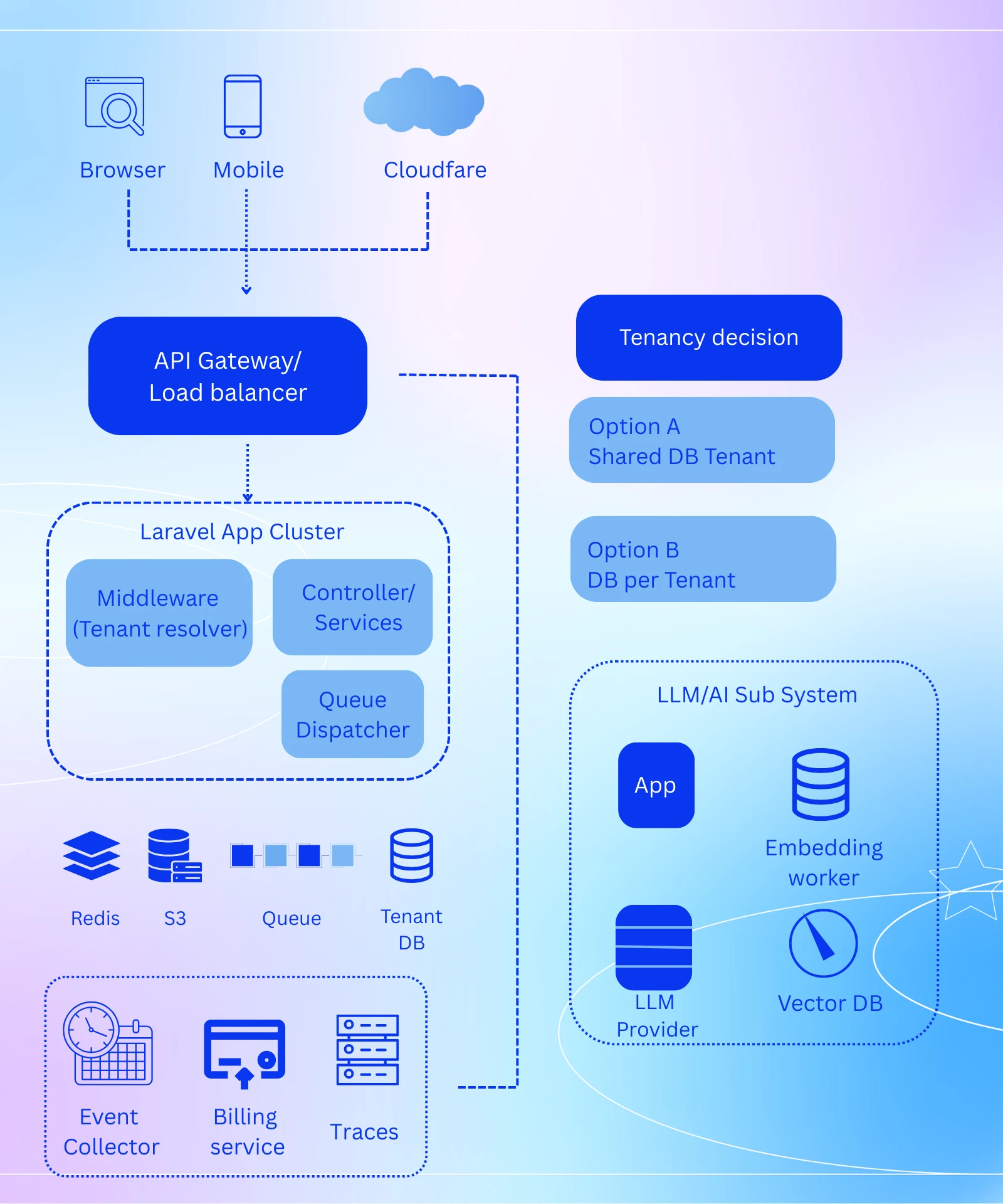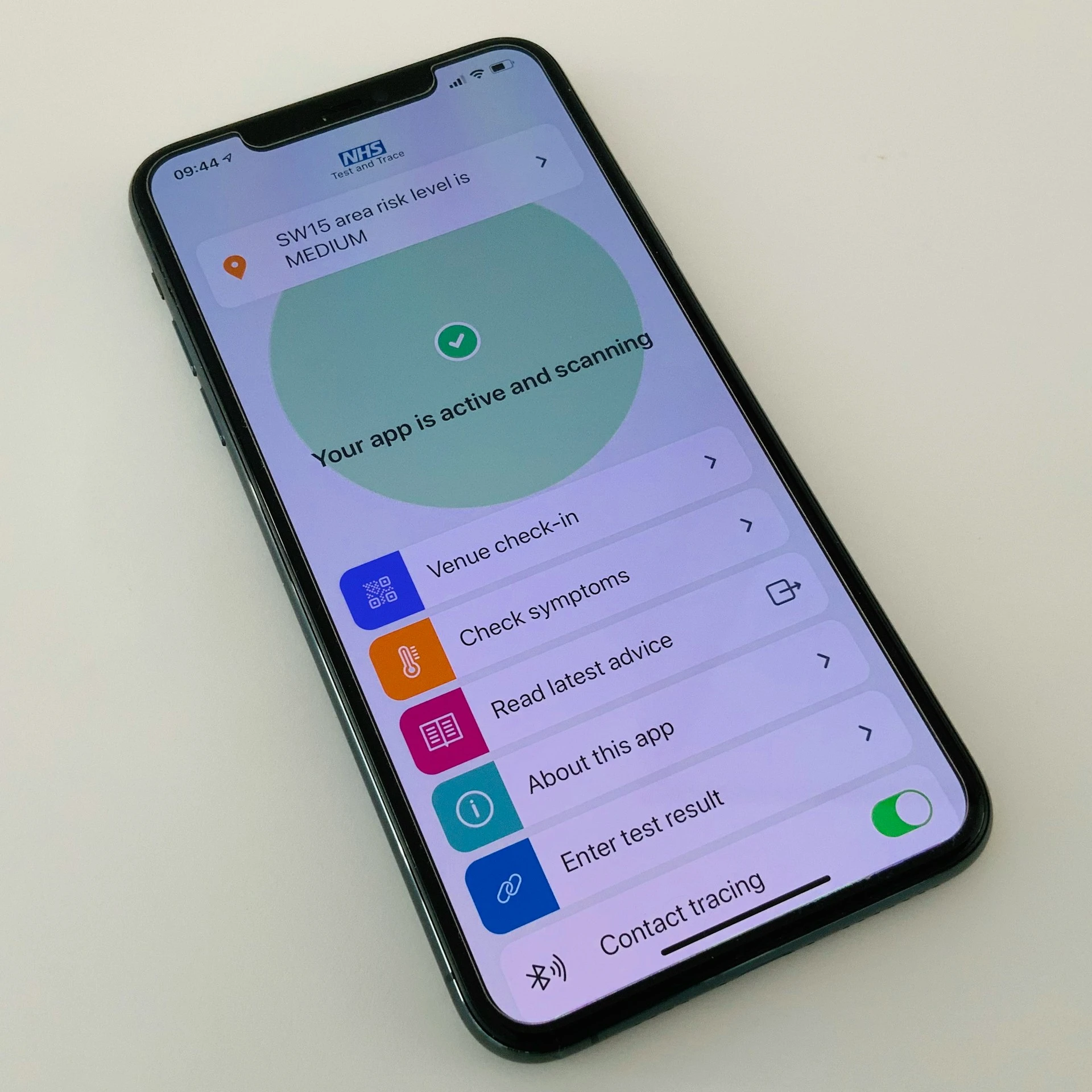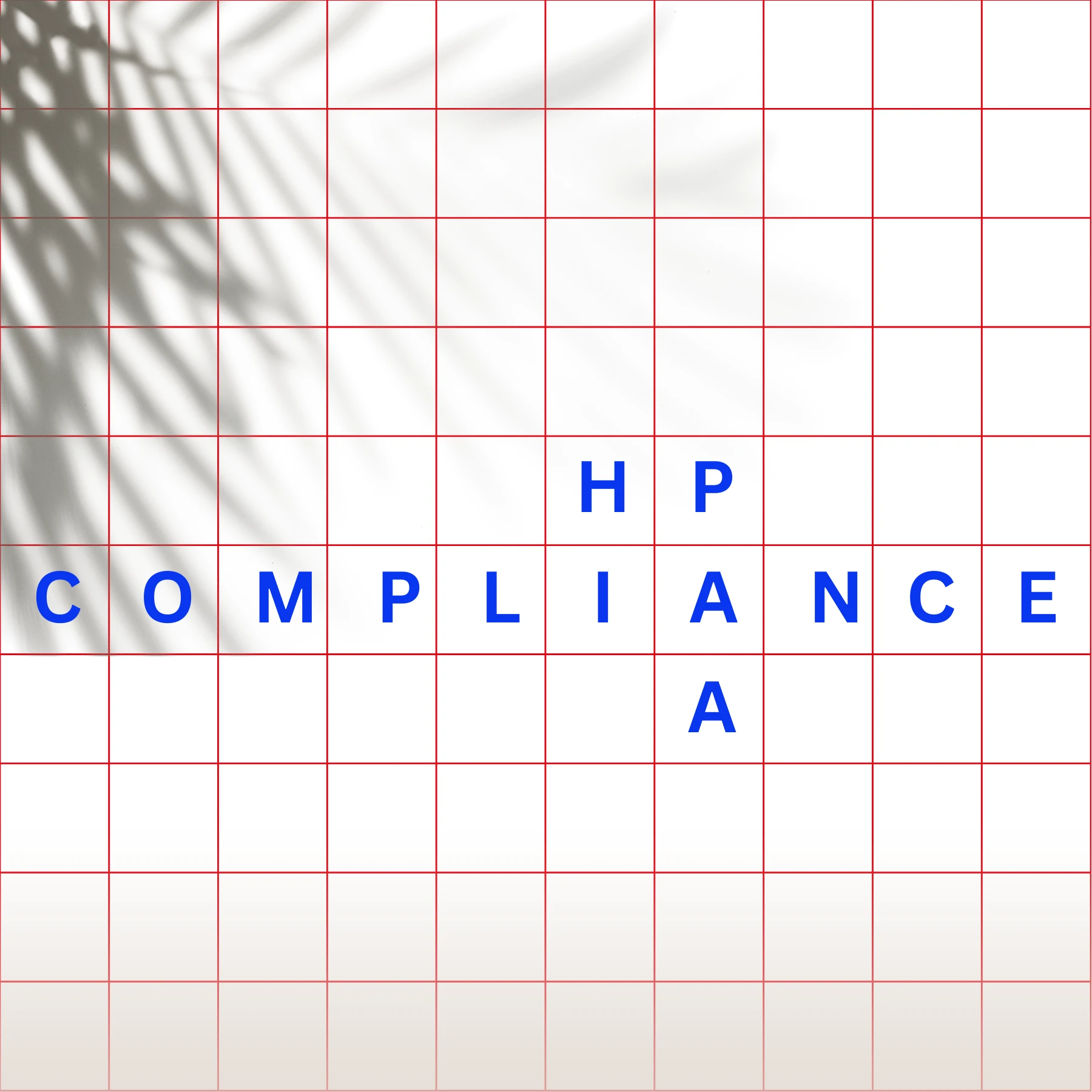
The SaaS economy thrives on multi-tenant architectures, a single application serving multiple customers (tenants) while keeping their data and configurations isolated. This model powers everything from productivity platforms like Slack to AI-driven marketing tools.
For CTOs and CEOs exploring scalable SaaS ventures, Laravel, the PHP framework known for its elegance and ecosystem, offers a solid foundation. With its extensive package ecosystem, robust middleware, and global developer adoption, Laravel simplifies the complex challenges of multi-tenancy: tenant routing, data isolation, provisioning, and security.
In this guide, we’ll walk through the core principles of multi-tenant SaaS with Laravel, compare tenancy strategies, and explore an architecture layout designed for scalability. We’ll also provide a concrete example: an LLM-powered marketing platform built as a multi-tenant SaaS.
Why Laravel for Multi-tenant SaaS?
Laravel is not just a web framework; it’s an ecosystem. Features like service providers, middleware, queues, and first-class support for API development make it suitable for SaaS foundations. Add-ons like Horizon (queue monitoring), Nova (admin panels), and Scout (search) reduce build time for recurring SaaS patterns.
More importantly, the Laravel ecosystem includes mature multi-tenancy packages such as:
- Stancl/tenancy – supports subdomain/domain tenant routing, DB switching, and filesystem isolation.
- Tenancy/tenancy – powerful for DB-per-tenant models.
With these, you avoid reinventing core tenancy plumbing and instead focus on business logic.
The Two Main Tenancy Strategies
At the heart of SaaS design lies a key question: How will you isolate tenant data? Laravel allows multiple strategies:
Single Database with tenant_id (Shared-DB)
- All tenants share the same tables, separated by a
tenant_idcolumn. - Cost-efficient, simpler to scale early-stage SaaS.
- Easier for cross-tenant analytics (e.g., usage trends).
- Risk: strict coding discipline needed to avoid data leaks.
Database-per-Tenant (Dedicated-DB)
- Each tenant has its own database.
- Strong isolation (ideal for enterprise or regulated markets like healthcare, finance, EU GDPR compliance).
- Easier to scale individual tenants (move to their own cluster).
- Higher operational overhead such as migrations, backups, and monitoring multiply with tenant count.
Most SaaS companies adopt a hybrid strategy: begin with a shared DB, and migrate high-value or noisy tenants to their own DBs when needed.
Architecture of a Multi-Tenant SaaS in Laravel
Here’s the reference architecture you can adopt when designing multi-tenant SaaS platforms with Laravel.
Key Components
-
Client Layer:
- Web and mobile apps connect through HTTPS.
- Domain/subdomain (e.g.,
tenant.myapp.com) identifies the tenant.
-
Edge / CDN / DNS:
- Cloudflare or Fastly handles SSL, caching, and subdomain routing.
- Improves GEO performance in USA, UK, EU, and AU.
-
API Gateway / Load Balancer:
- Manages routing, TLS termination, and rate limiting.
-
Laravel App Cluster:
- Stateless Laravel containers scale horizontally.
- Middleware resolves tenant from request (domain, token, or header).
- Controllers, services, and job dispatchers run in tenant context.
-
Tenancy Decision:
- Shared DB with tenant_id for most customers.
- Dedicated DB for high-value tenants.
-
Data & Storage:
- RDBMS (Postgres/MySQL) with read replicas.
- Object storage (S3) with tenant-specific prefixes.
- Cache: Redis with tenant-prefixed keys.
-
Queues & Workers:
- For background jobs (emails, AI tasks).
- Workers run with tenant context.
-
Billing & Metering:
- Usage events emitted from Laravel.
- Integrated with Stripe/Paddle for billing automation.
-
Observability & Ops:
- Centralized logging, tracing, and monitoring per tenant.
- Feature flags and CI/CD for safe rollouts.
Use Case: LLM-Powered Marketing SaaS
Large Language Models (LLMs) are transforming marketing automation. Think AI-generated campaigns, personalized messaging, and smart analytics. Imagine building this as a multi-tenant SaaS:
- App Layer: Laravel APIs where each tenant (a marketing agency or business) manages campaigns.
- AI Subsystem: A microservice connects to OpenAI or Anthropic for text generation, embeddings, or summarization.
- Vector DB: Pinecone or Weaviate stores embeddings per tenant namespace.
- Cost Control: Each tenant’s AI calls are rate-limited and billed via Stripe usage-based plans.

This example shows how Laravel can serve as the backbone of a cutting-edge SaaS product, supporting both classical web workloads and advanced AI integration, without reinventing infrastructure.
Business Benefits for CTOs & CEOs
- Lower Costs: Shared infrastructure across tenants maximizes efficiency.
- Rapid Iteration: A single codebase speeds feature rollout.
- Scalability: Horizontal scaling in app and DB layers supports growth.
- Enterprise Deals: Ability to offer DB-per-tenant unlocks compliance-driven clients.
- Future-Proofing: Laravel’s ecosystem plus tenancy packages reduces time-to-market.
Conclusion
Building a multi-tenant SaaS with Laravel is more than a technical decision; it’s a strategic enabler. Whether you’re scaling a startup or modernizing enterprise software, Laravel provides the right blend of flexibility, packages, and ecosystem support.
With the right architecture, clear tenancy strategy, strong security, and global readiness, you can deliver a platform that scales from a handful of tenants to thousands, while keeping data secure and costs under control.
And if you’re exploring advanced use cases like multi-tenant SaaS applications, Laravel remains a strong backbone for integrating cutting-edge AI into your SaaS vision.
Developer Tips & Insights

Building a HIPAA-safe Patient Dashboard with Next.js + Node.js- powered by Brightree data through MuleSoft


